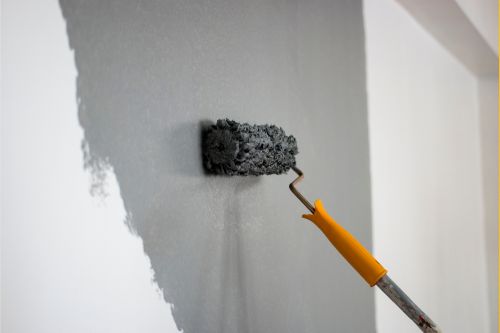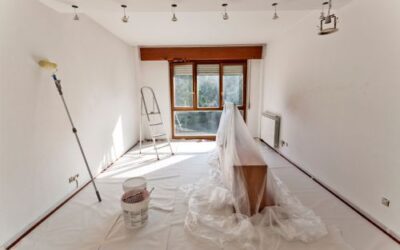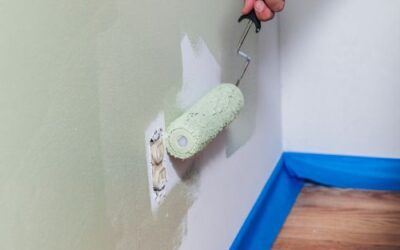Painting the interior walls of your home is an exciting project, but what happens if you use paint intended for exteriors instead of paint suitable for interiors? While it might seem like a practical solution, especially if you have leftover exterior paint, there are several important factors to consider before proceeding. Here’s what to expect if you decide to paint the inside of your home with exterior paint.
Differences between exterior and interior paint
Before understanding the potential consequences, it is essential to understand the key differences between exterior and interior paints. Exterior paints are specifically formulated to withstand extreme weather conditions, such as rain, intense sun and temperature changes. This means that they contain special additives to increase their durability, moisture resistance and UV protection.
Interior paints, on the other hand, are designed with air quality and ease of application in mind. They are softer, less toxic and dry faster in controlled environments.
Contact our professionals to paint the walls of your home
Health and safety issues
Emissions of volatile organic compounds (VOCs)
One of the main problems of using exterior paint in interiors is the emission of volatile organic compounds (VOCs). Exterior paints tend to have higher levels of VOCs, which are chemicals that evaporate and can affect indoor air quality. Prolonged exposure to these compounds in enclosed spaces can cause headaches, dizziness, and eye and respiratory tract irritation.
Persistent Odour
In addition, exterior paint often has a much stronger odour than paints designed for interior use. This odour can persist for weeks, which can be uncomfortable and unhealthy, especially in areas of the house that are used frequently.
Aesthetic appearance and texture
Undesirable finish
Another drawback is that exterior paint may not provide the finish you expect on an interior wall. Exterior paints are formulated to be harder and tougher, which can result in a coarser and less smooth texture than interior paints. This can make walls look less attractive and difficult to clean.
Problems with drying
Exterior paint may also take longer to dry in an indoor environment due to the lack of adequate ventilation and the difference in humidity and temperature conditions. This can lead to an increased risk of dust or dirt adhering to the walls during the drying process, negatively affecting the final finish.
Durability and maintenance
Deterioration of the finish
Although exterior paint is designed to be durable in adverse weather conditions, it is not optimised to withstand the wear and tear that occurs in interior spaces. This can result in faster deterioration of the finish, especially in high traffic or frequently cleaned areas.
Difficulty repainting
If you decide to repaint walls at a later date, exterior paint can make the process more difficult. Its harder formulation can make it more difficult to apply a new coat of paint, which may require sanding or the application of special products to prepare the surface.
Sustainable and safe alternatives
If you are considering using exterior paint in interiors due to budgetary reasons or because you have leftover paint, we recommend looking for alternatives. For example, some paint shops accept returns or exchanges of unopened paint. In addition, there are environmentally friendly, low-VOC interior paint options designed to be safe and durable indoors.
Painting with exterior paint inside your home may seem like a quick fix, but the health risks, impact on aesthetics and future maintenance complications make it a less than ideal choice. It is always best to use the right paint for the right type of surface to ensure a quality finish and a healthy environment. If you need advice on what type of paint to use, do not hesitate to contact Bartolomé Bas to ensure your painting project is a success.
Other publications that may interest you
Paint suitable for basements and poorly ventilated rooms
Basements, storerooms or garages have unique conditions: poor ventilation, high humidity and increased risk of mould or condensation. Using conventional paint in these spaces is a common mistake that leads to ephemeral finishes and health problems due to fungi or...
How often should a house be painted depending on its use?
The frequency with which you should paint a house is not always the same. It depends on several factors: the use given to each room, the quality of the paint used, exposure to light or humidity, and even the colour. In this guide we explain how often you should renew...
Tips for painting a room without staining doors and sockets
Painting a room may seem like a simple task, but without the right preparation it's easy to end up with splashes on doors, sockets, switches and even skirting boards. If you want a clean, professional finish, we've got the best tips to avoid stains and save you...




